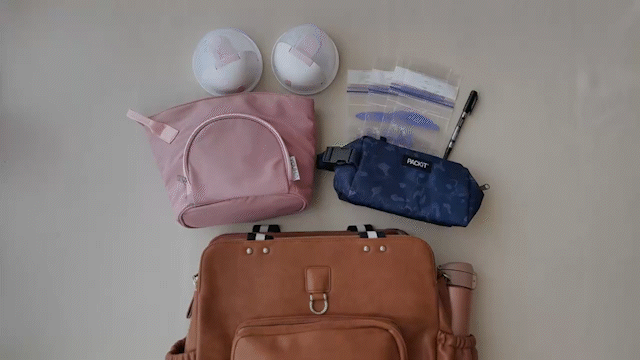
11 Tips for Pumping Breast Milk at Work
Balancing work and breastfeeding? Our customer service extraordinaire Bee recently returned to work after maternity leave and she has her pumping routine down-pat!
Here are her tips to help make pumping at work a breeze:
- Choose the right pump: Hand express? Manual pump? Electric pump? Choose the method that is best for you, however, as you’re here for tips; an electric pump with a double pumping kit is the most efficient and the best choice for use at work.
- Familiarise yourself with your pump: At first, it'll be important to familiarise yourself with how to use your pump at home. Then once you’re in the office to pump for the first time, the task won’t seem too daunting. You may also find it helpful to pump in a private space for your first time at work. The more often you pump in the office, the more you'll find out a rhythm that works for you.
- Pump when your milk supply is at its peak:Most mothers get their best supply in the morning. Or you can pump between breastfeeding, either 30-60 minutes after nursing or at least one hour before breastfeeding(1). If you’ve realised that your baby is dropping their night feed, you can also try and replace those feeds with a pump. That way you’ll also have a handy stash of night time milk. Night time milk? A little more explained under AM milk vs PM milk.
- Build a freezer stash: There may be times when you’re unable to pump or something unexpectedly arises. There will be no need to panic as you’ve got some back up.
- Know the difference between AM and PM milk:There have been studies to show that breastmilk that has been pumped in the morning has a slightly different make up to the ones that have been pumped in the evening. The levels of cortisol – a hormone that promotes alertness – is higher in morning milk than in evening milk. Melatonin, which promotes sleep and digestion, can barely be detected in daytime milk, but rises in the evening and peaks around midnight(2). Hence why it’s recommended to write the time on the bag so you know which milk to give to your baby.
- Look at photos and videos of your baby while pumping:The hormones in your body can be tricked to help release the letdown for your milk. It's probably not a shock to hear that even the best pump may not elicit the same hormonal response as your baby, so having photos, videos and hearing your baby may help with getting the milk flowing.
- Stay hydrated: Did you know that breastmilk is mostly made up of water? More than 80%(3)! So it’s a no brainer that keeping your fluids up is important. You can also get special teas that support breastfeeding. Fenugreek and Fennel are common herbs found in lactation teas.
- Fuel your body:Breastfeeding is hard work, it’s not a work out, but your body will use up the calories. Your body needs fuel to make the milk. You may find snacking on lactation cookies handy! Did you know that Brewer's Yeast is the special ingredient that is found in most lactation foods because it contains the proteins and minerals that help develop more breastmilk and support lactation(4). There’s no shortage of specially marketed lactation food and drinks, but you don’t need anything too special. As long as you’re not skipping meals (busy mum work life, I get it!) your body will have what it needs to make milk. As always, check with your medical professional if this is suitable for you.
- Incognito milk bag: If you do feel uncomfortable about storing your milk for others to see, keep the stored milk inside another bag/container that isn’t clear. Make sure to label your bag!
- Take a break if needed: Pumping regularly at work is hard work. It’s hard work full stop. If you’re feeling too much pressure to pump regularly, it’s okay to back off a bit and schedule just the one pump for the day. Try again tomorrow.
- No pumping bra? Use this hack: All you need is your pump and a breastfeeding bra!
Remember, it's important to listen to your body and do what works best for you. Consult with your medical professional if any concerns.
Read these next:


Content Disclaimer: The information and other content provided in this blog, or in any linked materials, should not be construed as medical advice and it is not intended to replace advice from your doctor or other registered health professional. All users are urged to always seek advice from a registered health care professional for answers to their medical questions and to ascertain whether the particular therapy, service, product or treatment described on the website is suitable in their circumstances. The views, thoughts and opinions expressed in the text belong solely to the author, and not necessarily to the author's employer, organisation, committee or other group or individual.
References:1) https://breastfeedingusa.org/content/article/how-much-milk-should-you-expect-pump-0
2) https://parentingscience.com/breast-pumps-and-baby-formula/
3) https://www.who.int/news-room/questions-and-answers/item/breastfeeding#:~:text=Breast%20milk%20is%20more%20than,to%20continue%20to%20grow%20well.
4) https://www.ncbi.nlm.nih.gov/books/NBK572248/

Leave a comment